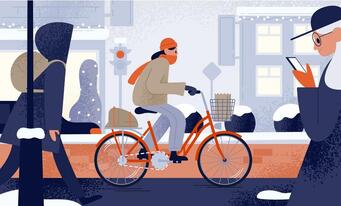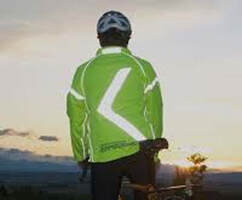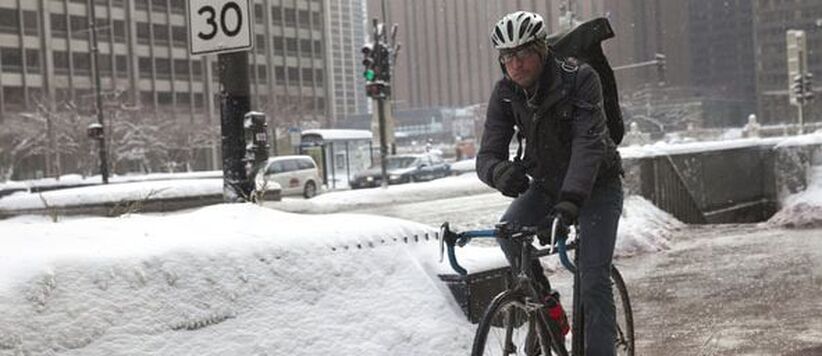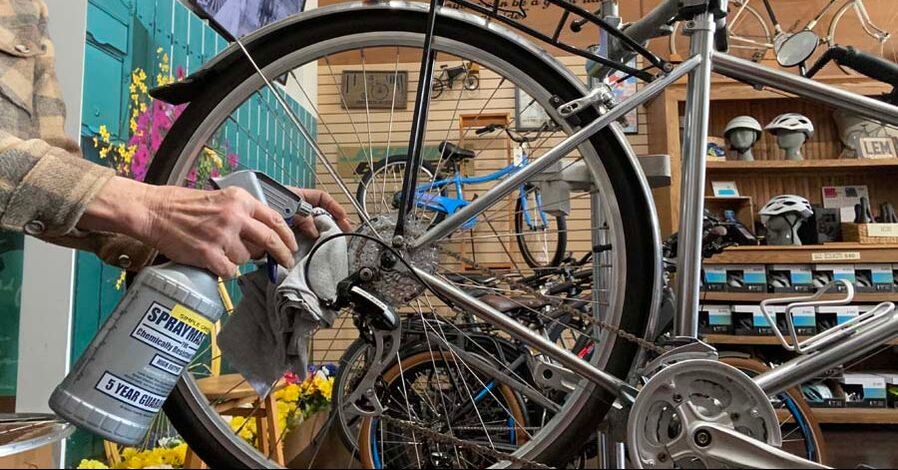 If you want to extend your biking season into the colder months, what gear should you have? What is the best type of bicycle to ride in the cold? How do you talk yourself into rolling out when the weather is not sunny, warm and dry? These topics and more were covered at the Nov. 10 virtual Zoom Chicago Cycling Club meeting. Panel members that shared their insights were Charlie Sax, Dave Barish, and Melanie Shaw. Charlie and Dave are year around cyclists commuting from the northern suburbs to the Chicago loop. Charlie has been working from home since March due to the pandemic, so he added his own COVID sanity rides of 18-20 miles around his neighborhood to his routine. Both have fine tuned their approach to winter biking over time based on their experiences and had plenty of advice to share. Why Bike in Winter Like Charlie and Dave, cyclists who choose not to put their bikes away in the winter say they enjoy being active. With a little planning and preparation, it is possible to be comfortable outdoors in the colder temperatures and to continue to use a bike for transportation and recreation, even if it is just part of the time. Using a bike results in less time on public transit with it’s inherent risks during the pandemic, and is more kind to the environment than a private auto or car share service. With less people cycling, the bike lanes are less congested and there is more room on the road to speed through intersections. Everyone has a different tolerance for the cold so the lowest temperature a person is willing to roll out at varies. The presence of ice and snow on the ground is also a factor. Bike winter enthusiasts say they have developed different practices for biking when it is 40 degrees, 30 degrees, 20 degrees and below zero based on experience. They all agree at you should take into consideration the four Ws: weather, wind, water, and w(visibility). The Bike Avid cyclists usually have multiple bikes, so they can designate one as their “winter bike” and have it outfitted as follows:
 The Gear Winter cyclists dress to keep moisture and wind off. Technical clothing can be expensive so they look to use clothing they already own for other sports, such as running, skiing or snowboarding.
Where to bike The best routes in winter are counter intuitive. While most cyclists like to bike on smaller, less trafficked streets, in the winter these are the last to be plowed so winter cyclists recommend staying on the major thorough fares that are regularly cleaned. Motivation In spite of the natural psychological and physical benefits of cycling, many people take steps to be motivated to roll outside when it is not warm, sunny, and dry. Melanie Shaw shared how she sets personal and professional goals, in this case maybe cycling 2-3 times per week, or a number of miles per week or over a season. A good time to set a goal is at the onset of the season, or at the beginning of the year when people traditionally set goals. Once a cycling goal is set, the next step is to track progress by marking days ridden in a calendar or collecting miles ridden data from a bike computer or cycling app and downloading it into a spreadsheet. Some cyclists are so motivated to achieve their goals if they find themselves a little short of a mileage goal, they will bike around the block a few times to get to the extra distance they need. Sharing your cycling successes with others or cycling with a buddy is another way to stay accountable. Last winter we only had two snowfalls, so we’ll just have to wait and see what nature brings us this year. But with health experts recommending spending time outdoors for better mental and physical health, adding some winter biking to the mix is a good idea. Comments are closed.
|
Earth Rider Blog about CycingAuthorSharon Kaminecki and others comment on adventures in bicycling and other stories Categories
All
Archives
August 2023
|




